Overview
The Medical Physics Residency in Diagnostic Imaging at Mayo Clinic's campus in Arizona is a training program focusing on imaging for diagnosis and image-guided interventional procedures. The program is open to candidates with a doctoral degree in medical physics, physics, or a closely related field. The program training lasts three years.
The objectives of the Medical Physics Residency in Diagnostic Imaging are twofold.
- Provide broad training and experience for those who wish to pursue careers in clinical diagnostic imaging.
- Provide a strong academic component for candidates who wish to follow a more academic path.
The program typically begins July 1. It is structured to provide general training in diagnostic imaging modalities, including general X-ray, fluoroscopy, angiography, mammography, ultrasound, CT, MRI, nuclear medicine, PET, and informatics/image analysis.
The program also provides:
- an opportunity to conduct research and quality improvement projects
- support to present and publish
- support to attend conferences
- teaching opportunities
- access to:
- PET/MR
- 7T MRI
- Photon-counting CT
- Molecular breast imaging
- Dedicated musculoskeletal CT scanners
- Contrast-enhanced mammography
- 3D printing lab
Accreditation, certification
Accreditation
This training program received initial accreditation from the Commission on Accreditation of Medical Physics Education Programs (CAMPEP).
Certification
This program provides specialized residency training required for eligibility for American Board of Radiology certification.
Application process
Positions
One new residency position is available every year beginning in 2025.
Qualifications
- Have graduated from a CAMPEP-accredited PhD graduate program, or
- Possess a PhD in physics or related discipline and have completed a CAMPEP-accredited certificate program, or
- Possess a PhD in physics or related discipline and have satisfactorily completed courses equivalent to those in a CAMPEP-accredited certificate program, as determined by the CAMPEP Graduate Education Program Review Committee (GEPRC).
Also see general admissions requirements.
How to apply
The academic year begins July 1.
The application and all supporting documentation must be submitted by Jan. 8 of the year preceding the program start date.
The program uses an online application system sponsored by the American Association of Physicists in Medicine (AAPM) and participates in the Medical Physics Matching Program.
To apply, please visit the NMS MedPhys Match website.
Curriculum
The Medical Physics Residency in Diagnostic Imaging at Mayo Clinic's campus in Arizona is structured to provide clinical training rotations that satisfy Commission on Accreditation of Medical Physics Education Programs (CAMPEP) residency program requirements, as well as become involved in specific research with clinical application.
Training rotations include the following diagnostic-imaging modalities:
- General radiography and DXA
- Fluoroscopy and Angiography
- Radiographic Breast Imaging and Biopsy
- Computed Tomography
- Magnetic Resonance
- Ultrasound
- Informatics
- Elective: Programming and Image Analysis
- Elective: Nuclear Medicine (Not PET) and Radiation Safety
- Elective: PET/CT
Didactic training
Several seminar and conference series are available for residents to attend on campus. You will participate in radiology resident conferences, in-service education for technologists, and Journal Club.
Evaluation
To ensure that you acquire adequate knowledge and develop your technical skills, your performance is monitored carefully during the course of the Medical Physics Residency in Diagnostic Imaging. You are evaluated by your supervising faculty member and the program director after each clinical rotation. In addition, you regularly evaluate the faculty to ensure that your educational needs are being met.
Benefits Highlights
- Support for one conference per year attendance (more conferences allowed if presenting)
- Retirement account with matching funds
- Generous vacation (20 days per year) + separate paid sick leave
- Free parking
- Paid days to interview for post-graduation positions
- Visa support
- Learn more about specific stipend, insurance and benefit information
Belonging
At Mayo Clinic, we foster an inclusive working environment and embrace the diversity of all our trainees, faculty, staff, and patients. Our Office of Belonging offers tremendous resources to support our mission of maintaining a welcoming atmosphere for all our employees, including our learners. We strive to provide culturally appropriate care and do our part to reduce healthcare disparities.
/0x0:512x512/prod01/channel_2/media/studio-sites/mccms-reference-guide/512X5121573348_3801872_0024-(1).jpg)
Video: See yourself at Mayo Clinic
5:33
From the program director
Thank you for taking an interest in our residency program! At Mayo Clinic, our focus is on the needs of the patient in all aspects of education, research, and patient care.
Here, you will have the opportunity to work one-on-one with medical physicists, radiologists, and other hospital staff who are leaders in their fields. Specifically, in the physics division we focus on creating and implementing clinical innovations that support our division motto: Better, Faster, Cheaper.
Mayo Clinic's campus in Arizona has modern facilities with state-of-the-art equipment in Phoenix and Scottsdale. Our Phoenix campus is undergoing a massive expansion as part of the Arizona-Bold-Forward initiative which will only further enhance your educational experience. Both Phoenix and Scottsdale are wonderful places to live with excellent weather, abundant outdoor activities, and plenty of amenities and conveniences.
I hope you consider advancing your training at Mayo Clinic, and I look forward to hearing from you.
William Sensakovic, Ph.D.
Medical Physics Residency in Diagnostic Imaging Program Director
Department and faculty
The Department of Radiology at Mayo Clinic's campus in Arizona provides subspecialized, high-quality, and comprehensive imaging and interventional care to patients. The department consists of approximately 50 radiologists, all of whom have completed subspecialty fellowship training.
The physics division is comprised of approximately 15 members ranging from computer scientists to medical physicists. Our team focuses on clinical innovation and bringing ideas into the clinic for the benefit of our patients.
The department is organized into eight subspecialty divisions:
- Abdominal imaging
- Breast imaging
- Cardiothoracic imaging
- Vascular and interventional radiology
- Musculoskeletal imaging
- Neuroradiology
- Nuclear medicine
- Ultrasound
Faculty
In addition to clinical practice, Mayo Clinic's faculty members are committed to teaching and facilitating the growth of medical knowledge. Many faculty members have published and lectured extensively and are recognized leaders in their fields. You have direct access to these individuals throughout the Medical Physics Residency in Diagnostic Imaging.
Advisers and mentors
The program director serves as a consistent adviser throughout the residency. In addition, the faculty members in each rotation area serve as your advisers during those rotations. During specialized rotations, the faculty in those areas provide you with day-to-day direction.
Visiting professors
Many prominent professors visit Mayo Clinic each year. They present their work during lectures and participate in hospital rounds. You are encouraged to take full advantage of these opportunities.
Meet the faculty
 |
William Sensakovic, Ph.D.Program director |
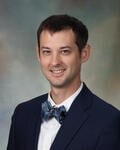 |
Samuel Fahrenholtz, Ph.D.Assistant Professor of Medical Physics |
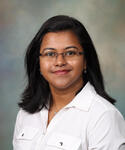 |
Imon Banerjee, Ph.D.Associate Professor of Radiology |
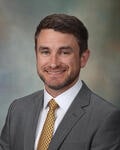 |
Michael Cuddy, M.S.Instructor in Medical Physics |
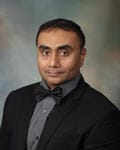 |
Khushnood Hamdani, M.S.Instructor in Radiology |
 |
Kevin Nelson, Ph.D.Assistant Professor of Radiology |
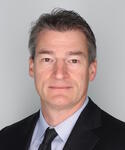 |
Gene Paden, M.S.Assistant Professor of Radiology |
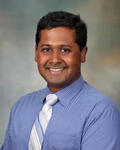 |
Anshuman Panda, Ph.D.Assistant Professor of Radiology |
 |
Jeremiah Sanders, Ph.D., M.S.Assistant Professor of Medical Physics |
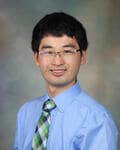 |
Jeffery Xiao, M.S.Instructor in Medical Physics |
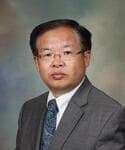 |
Yuxiang Zhou, Ph.D.Associate Professor of Medical Physics |
Program statistics
Program statistics
For each year, we list the number of applicants, the number of positions filled, and the number of graduates.
| Academic year | 2024 | 2025 | 2026 |
|---|---|---|---|
| Number of applications | 19 | ||
| Number offered admission | 1 | ||
| Number enrolled in program | 0 | ||
| Number completing program | 0 |
| Destination of graduates | 2024 | 2025 | 2026 |
|---|---|---|---|
| Clinical | 0 | ||
| Industry | 0 | ||
| Academic | 0 | ||
| Government | 0 | ||
| Additional education | 0 | ||
| Still seeking position | 0 | ||
| Other | 0 |
/0x0:512x512/prod01/channel_2/media/mccms/content-assets/academics/residencies-and-fellowships/512X512-1537720_3454815_0001R.jpg)
Video: The Arizona Experience
2:30
Wellness initiatives
As a trainee, your physical and mental health are priorities to Mayo Clinic and the department. Trainees have access to several resources to promote well-being, as well as time off clinical duties to attend appointments.
- Fitness centers
- Groups on campus
- Well-being
Fitness centers
 As a resident or fellow at Mayo Clinic in Arizona, you have access to an exclusive learners-only gym and wellness center conveniently located in Phoenix. Additionally, Mayo Clinic residents or fellows at our three campuses get discounted membership fees to area gyms through PerkSpot, the Mayo Clinic employee discount program.
As a resident or fellow at Mayo Clinic in Arizona, you have access to an exclusive learners-only gym and wellness center conveniently located in Phoenix. Additionally, Mayo Clinic residents or fellows at our three campuses get discounted membership fees to area gyms through PerkSpot, the Mayo Clinic employee discount program.
All Mayo employees, including Arizona learners, can also sign up to take live virtual fitness classes or view recorded fitness classes offered by the Dan Abraham Healthy Living Center (DAHLC).
Groups on campus
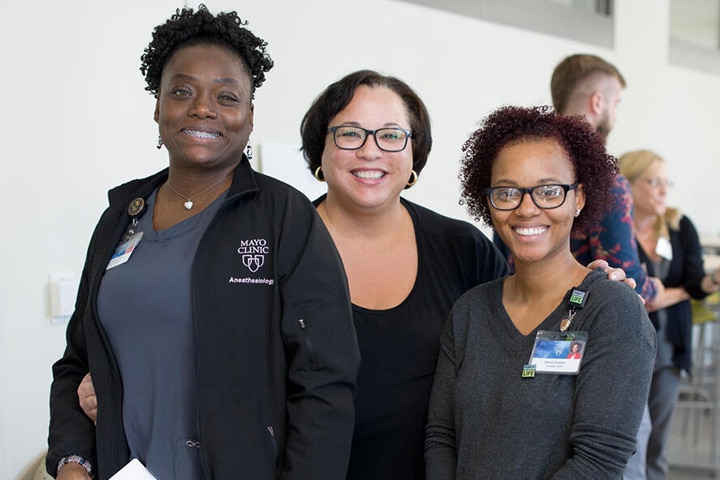 Opportunities to join a variety of groups on campus provide regular social activities and can help enhance your training while connecting with a broad group of peers.
Opportunities to join a variety of groups on campus provide regular social activities and can help enhance your training while connecting with a broad group of peers.
Trainees have the opportunity to join a Mayo Employee Resource Group (MERG) at any time during their training program. MERGs are employee-led affinity groups to promote belonging, increase cultural awareness, and foster an environment of respect and inclusivity. Any Mayo Clinic employee can join a group of interest and choose their level of involvement.
Well-being
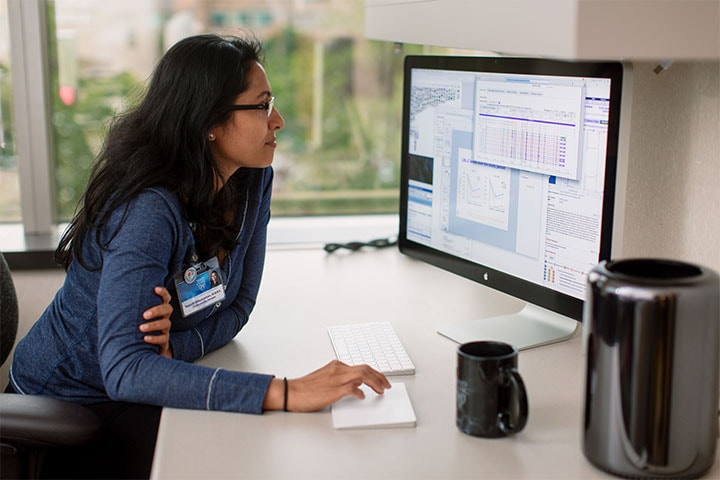 The Office of Academic Support and Well-Being provides resources to promote academic, emotional, social, cognitive, financial, and physical well-being. Career and academic services include academic advising, peer tutoring, and accommodations for learners with disabilities or health conditions. Mental health services, counseling, interview practice, and a variety of enrichment sessions on topics like budgeting, resiliency, and stress and burn-out are also available through the Academic Support and Well-Being office.
The Office of Academic Support and Well-Being provides resources to promote academic, emotional, social, cognitive, financial, and physical well-being. Career and academic services include academic advising, peer tutoring, and accommodations for learners with disabilities or health conditions. Mental health services, counseling, interview practice, and a variety of enrichment sessions on topics like budgeting, resiliency, and stress and burn-out are also available through the Academic Support and Well-Being office.
More from Mayo Clinic School of Graduate Medical Education
/0x0:512x512/prod01/channel_2/media/mccms/content-assets/shared-documents/campus-AZ-3180811-0001-pic-tile.jpg)
Phoenix/Scottsdale, AZ
Campus and community/0x0:512x512/prod01/channel_2/media/mccms/content-assets/academics/residencies-and-fellowships/3319834_0363-512X512.jpg)
Choosing Mayo Clinic
/0x0:512x512/prod01/channel_2/media/studio-sites/mccms-reference-guide/512X5121676671_3824027_0010_C.jpg)
Stipend and benefits
Mayo Fellows Association (MFA)
The Mayo Fellows Association (MFA) offers a peer and social support network for residents and fellows and their families with social events, athletics, and advocacy. The MFA also holds an annual resident and fellow appreciation event open to all trainees with complimentary massages, stress-reducing activities, and social support.
Restrictive covenants
Mayo Clinic does not utilize restrictive employment covenants or non-compete clauses in employment contracts, beyond those used for business materials and intellectual property, which are applied to all Mayo Clinic employees. Mayo Clinic School of Graduate Medical Education assigns learning modules to residents covering business materials and intellectual property restrictions, and the program monitors the timely completion of the learning material and/or attestations acknowledging understanding.
Note: This website for the Medical Physics Residency in Diagnostic Imaging program at Mayo Clinic in Arizona is reviewed annually by the program director and steering committee to ensure updates and functionality are regularly applied. Updates may also occur more frequently to reflect accurate information, achievements, statistics, and enhancements as needed.
/0x0:440x220/prod01/channel_2/media/mccms/content-assets/campus-amp-community/arizona/440X220_sidebar-mayo-clinic-phoenix-arizona-is453080663.jpg)